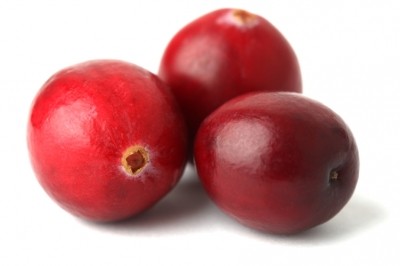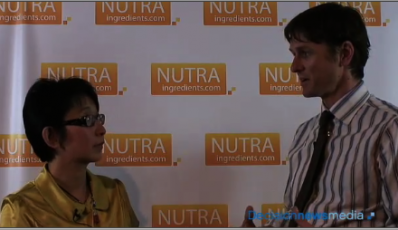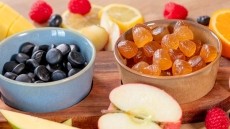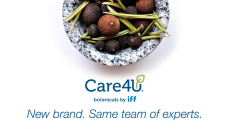Special Edition: Cranberries
Markets: cranberry goes mainstream
According to a Euromonitor report, US based Ocean Spray Cranberries, which reportedly enjoys a 65 per cent share of the global cranberry market, has been highly influential in pushing the cranberry agenda and turning around declining sales by integrating it into as many product sectors and categories as possible.
Health claims
Cranberries' most distinctive and most highly publicised health benefit pertains to their application in preventing urinary tract infections (UTIs).
However, Euromonitor analyst Ewa Hudson argues that care has to be taken when deciding how and to what extent to employ the health and wellness marketing platform in relation to cranberry based products: “For example, any overt claims relating to cranberries' proposed efficacy in alleviating specific conditions, such as UTIs, risks alienating mainstream health and wellness consumers.”
And she claims a broader ‘superfruit’ and ‘high in antioxidants’ marketing slant will increase a cranberry based products mass market appeal.
The US Department of Agriculture (USDA) ranks cranberries high in antioxidant content, which it quantified as 1,750 ORAC (Oxygen Radical Absorbance Capacity) compared to around 700 for oranges, 950 for broccoli and 1,250 for raspberries.
Fruit snacks growth
Meanwhile, Euromonitor notes that Ocean Spray ranks third in the global fruit snacks market, with a two per cent value share in 2007, and its value sales in the category rose from US$37m in 2001 to US$73m in 2007.
Fresh food data from the market analysts shows that global volume sales of fresh cranberries/blueberries in retailers, foodservice and institutional channels grew by a 20 per cent (from 1.04 to 1.24 million tonnes) from 2003 to 2008.
Product launches
Data from Mintel shows that so far in 2009 there have already been 562 new cranberry product launches, 38 more than in 2008 and nearly twice the 310 debuts of 2005.
The US is dominating the global product launches since 2005, with 675 of the new 2,236 products using cranberry as an ingredient being released in that market. Canada follows with 302, the UK is next in line with 195, and Germany at 85 and Japan at 79 take fourth and fifth place respectively.
Juice gains
Euromonitor also reports that cranberry juice is increasingly successful outside its ‘home market’ of the US.
In the UK, cranberry juice is the most popular type of nectar (25-99 per cent juice), accounting for 35 per cent of off-trade volume sales in 2008, and the same goes for Ireland, where almost half of nectar sales were accounted for by cranberry products.
While, in Israel, cranberry juice's share of off-trade nectar volume sales shot from virtual obscurity in 2005 to almost 6 per cent in 2008.
Hudson maintains that cranberry’s rise to superfruit stardom in the juice domain has served to facilitate its entry into the food market:
“It seems that consumers have really taken to the distinctive cranberry taste, and have started to expect cranberry versions of virtually any product, which is either fruit-based or conventionally features a fruit component.”
Snacking potential
Chris Brockman, a market researcher with Leatherhead, believes the future potential for the berry as a food ingredient lies in its use as a dried fruit in cereal bars, sugar and chocolate confectionery, where it has already made significant inroads.
Indeed, Mintel notes 52 new cranberry product launches in the global snack market in 2009.
Brockman told this publication that health and wellness trends are driving the new cranberry snack and confectionery product launches with the berry being teamed up with dark chocolate in particular.
He said that the US is definitely the dominant force with Ocean Spray’s dried cranberry snacks, Craisins, reportedly having sales of over US$100m in the US last year, and July of this year saw the release of Raisents from Nestle, dried cranberries (from Ocean Spray) covered in milk chocolate in the US market.
But he notes significant cranberry product activity in the UK, and claims it is a well established berry in that region: “Cheese is proving an interesting vehicle for the berry, with notable new products combining classic British cheeses such as Wensleydale and Stilton and cranberry.”
He said the science behind the fruit appears robust and it is this factor that is underlining consumer confidence in cranberry as an ingredient.
“The superfruit trend has obviously kick-started demand along with blueberries, goji berries, pomegranate, and acai berries in particular which along with cranberries appear to be the more established superfruits now,” reports Brockman.
Another unusual launch this year, said the Leatherhead researcher, was a functional chewing gum with a natural cranberry flavouring from Canadian company Bonus Gum.
Marketing platforms
Euromonitor analyst Hudson cautions that while cranberry products are incredibly versatile and can be successfully marketed with several positioning, it is still important for manufacturers to be clear about which marketing platforms they are leveraging.
“A health and wellness-oriented positioning works well for fruit snacks, but is unlikely to do the trick for cranberry ice cream. In fact, a seemingly contradictory health and wellness-indulgence positioning may well detract from the product's credibility.”
Extracts
David Tournay from France’s Tournay Biotechnologies, who is president of Euracran, the European Association for the Valorization of Cranberry Extracts, told NutraIngredients.com that the cranberry extract market is quite big in France, due to the mandated cranberry health claim for UTI there. The market is also growing in other European countries and the typical dose level is 36mg.
While the US extract market is much larger, added Tournay, low concentration extracts are more common there.
He said that the French cranberry supplement market grew 15.5 per cent between 2008 and 2009, in a general food supplement market decreasing by 6 per cent. Sales of cranberry supplements totalled €23m in that period out of a total food supplement market of €665m in France.












